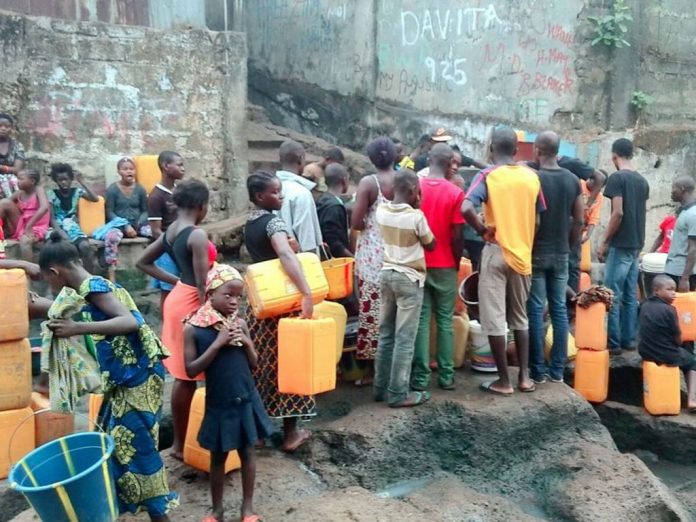By Amin Kef Sesay
Notwithstanding the fact that Guma Valley Water Company no longer has the financial, infrastructural, institutional and logistical capacity to supply over 2 million residents of the Western Area with clean pipe borne water, it can make what is available for now to serve a lot more people if it puts in place zonal water use monitoring and pipe repair teams to check for illegal connections and people who cut pipes to access water illegally.
The problem of access to clean water in the Western Area has become acute in recent times having health and investments implications.
A conservative estimate would be that more than 30 percent of houses in the ever sprawling Western Area have no pipe bringing clean drinking water to them. Of course hence the proliferation of water bottling companies in the Western Area – over 200, Hon. Marah has said.
Because this amount of the population does not have access to safe water, it also implies that they do not have adequate sanitation.
Putting it another way, in the next 20 years water supply coverage will have to more than triple and sanitation coverage more than quadruple, if everyone is to be adequately served.
The solution lies in first and foremost putting in place robust measures and strategies to ensure that the huge amount of clean water that is wasted every day is drastically minimized. There are other remedies. These include:
(1) Reduce unaccounted-for water (water that is pumped into the system but never produces any revenue for the company), which is at an excessively high level.
(2) Avoid or discourage wasteful use, by imposing higher charges on excessive use, encouraging the use of water-efficient fixtures and above all adopting sanitation systems that place minimal demands on water supply.
Reduction in unaccounted-for water
Guma does not know what happens to more than half of the water that is pumped into their systems. This water disappears through physical leaks, is stolen through illegal connections, and is not recorded because meters are not functioning or are not read, or is not billed because of institutional inefficiency or corruption.
The impact is a system that is very hard to manage, where scarce water is lost, and which does not generate enough revenue to support proper operation and maintenance. The ways to solve this problem are well-known and not technically complicated. They are:
- Reduce physical losses to the lowest level economically feasible
- Meter at least all major consumers
- Bill everyone for water supplied, and enforce payment.
Avoid or discourage wasteful use
Just as the tools to reduce unaccounted-for water are well known, so are many of the tools for reducing unnecessary use of water.
Tariffs should increase with increasing consumption. Low-income users need to be protected by “lifeline” rates, but the higher levels of consumption should be charged at the marginal cost of developing new supplies. This should act as a deterrent to frivolous use.
Water-saving devices should be mandatory, so that all new installations and all renovations use only such devices. Flush toilets in particular, which can account for 40% of domestic use, must be made more efficient (with a 6-liter flush as an upper limit).
- Industrial processes should be made much more water-efficient, either by process redesign or by recycling
- Failure to create effective institutional frameworks, including regulatory capacity, autonomous service providers, appropriate involvement of the private sector and the user communities.
- Lack of integrated water resources management including critically protection of water catchment basins
Conclusion
Government (in collaboration with external support agencies need to determine which of the “easy solutions” are appropriate, and then implement them. However, it is abundantly clear that they would not be sustainably implemented in the absence of political will and an enabling environment. These actions include:
- Developing an integrated approach to all water resources use, and creating institutions that will be able to resolve inter-sectoral and conflicts over use.
. Creating a structural and regulatory framework that (a) devolves responsibility for urban environmental service delivery to the lowest level able to provide it; (b) encourages private sector participation and community participation; and (c) supports community management of service delivery where the community is able and willing to assume that responsibility.
- Exploring ventures with the private sector to reduce the need for publicly-funded capital investment programs and to increase institutional competence.




